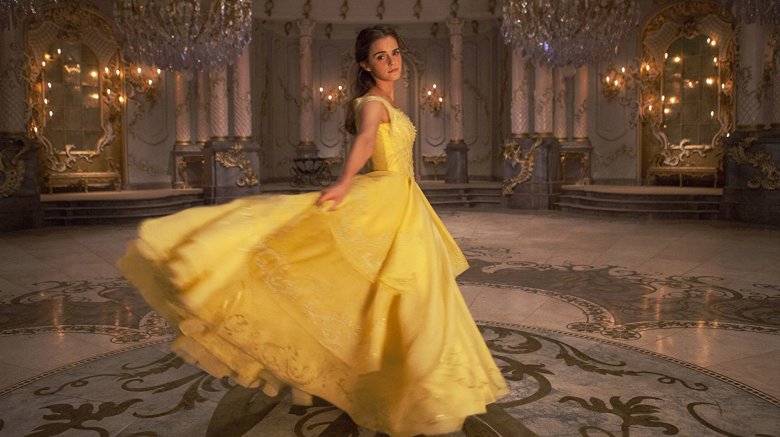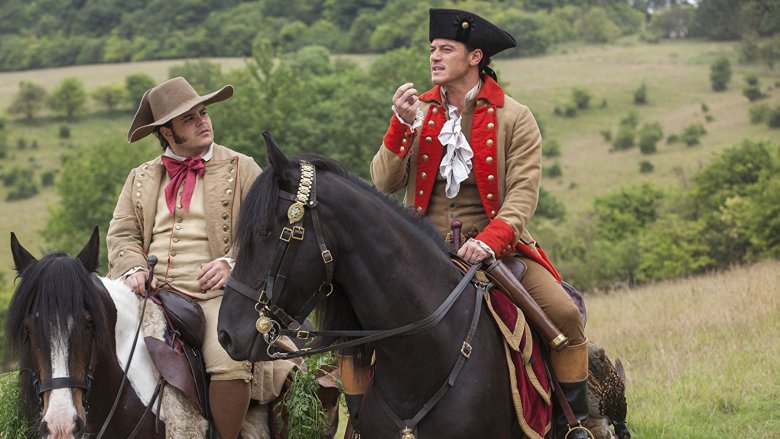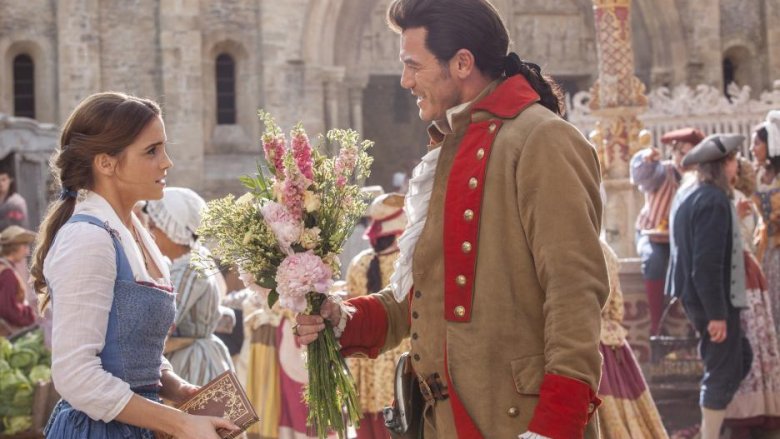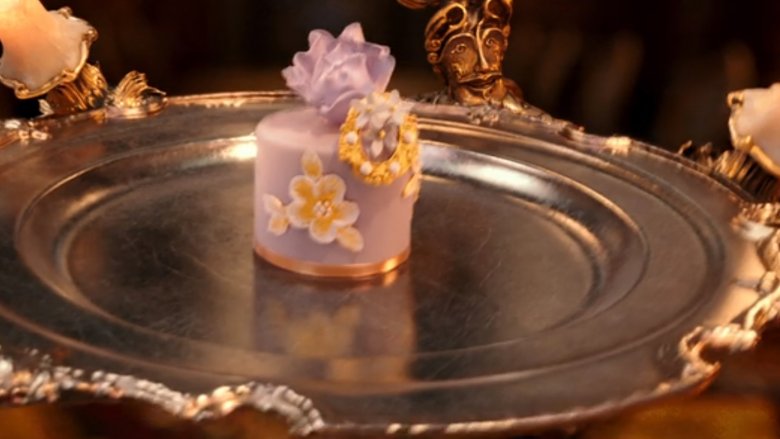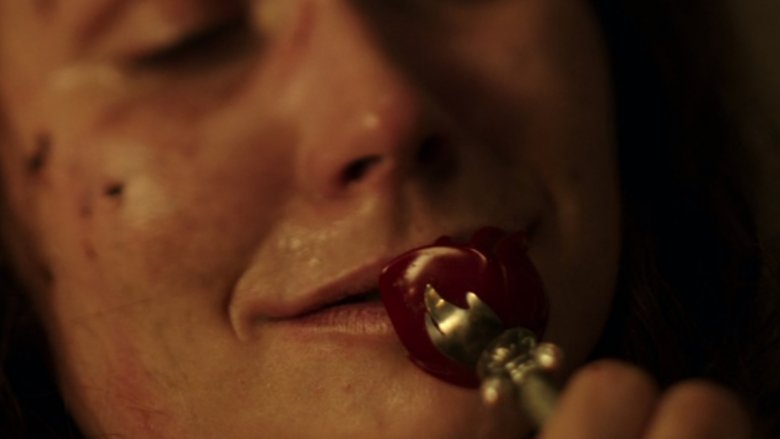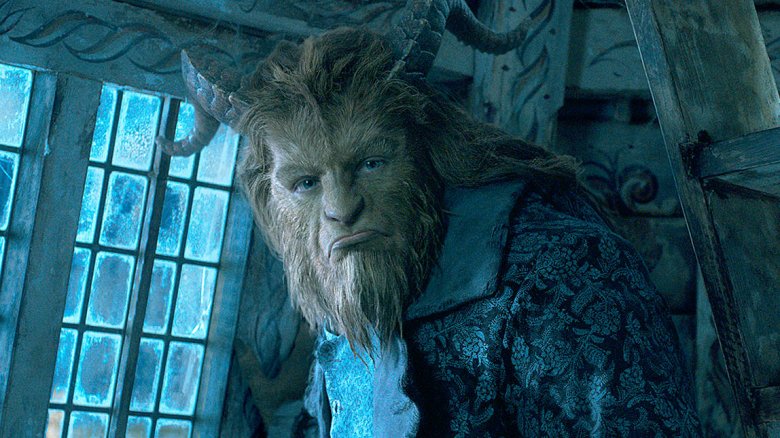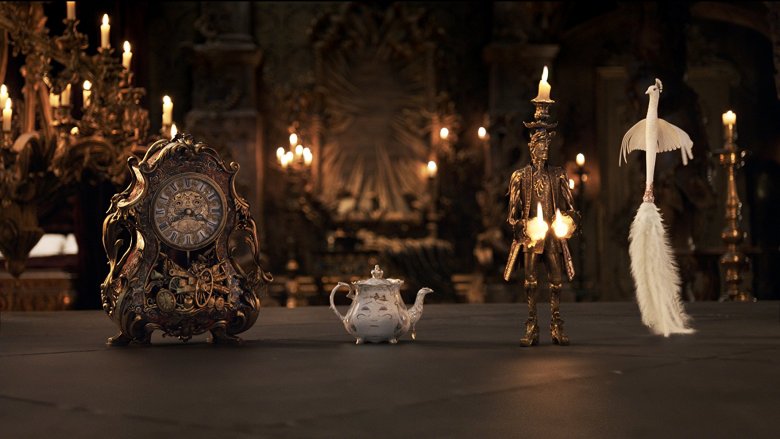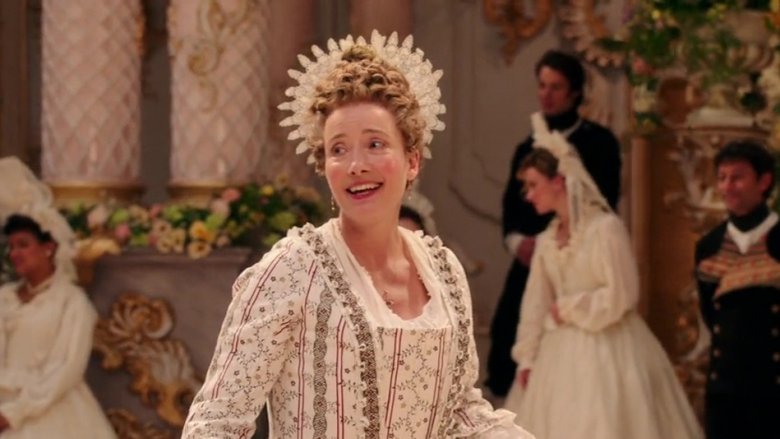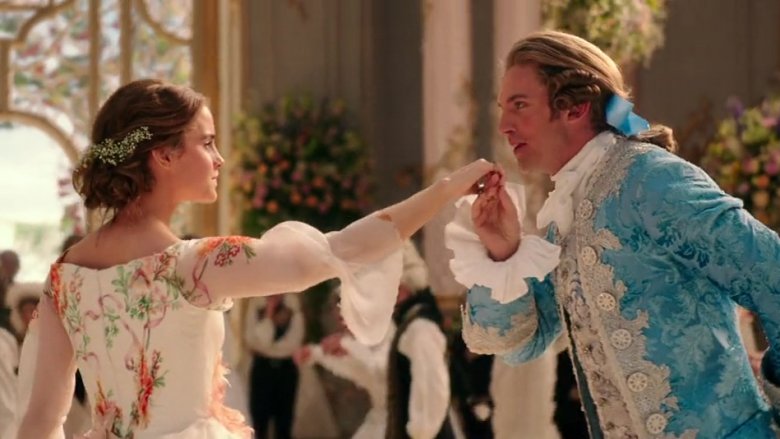Things Only Adults Notice In Beauty And The Beast
Disney's 2017 remake of Beauty and the Beast was one of the year's most successful movies, and for good reason: the Bill Condon-directed picture offered a lavish display of special effects achievement that still remained mostly faithful to the beloved 1991 animated original version. The provincial, life-fatigued bookworm Belle (Emma Watson) shows up on our screens looking for an exciting new adventure, and lo, she gets one alright — filled with talking candlesticks, a touch of Stockholm Syndrome, and, of course, the beautification of the Beast (Dan Stevens).
But even with the new version of this "tale as old as time" re-treading so much familiar territory, Beauty and the Beast still leaves a lot to be discussed, especially for anyone who's not in the target demographic. From subtle innuendos about the film's quirky characters to loosely dangling plot threads, there are quite a few things you might only notice about the movie as a member of the film's grown-up audience.
Keeping him hanging
It's no accident that LeFou (Josh Gad) is given a much more flamboyant persona in the new iteration of the story than the cartoon version. Bill Condon made a conscious decision that the character would be perceptibly gay so as to bring more inclusion and modernity to the story. LeFou's sycophantic allegiance to the increasingly terrible Gaston (Luke Evans) is probably owed, at least in part, to him having a major crush on the guy. It might seem on first blush that his affection for the burly hunter is completely one-sided, but there are a couple of subtle — and sometimes R-rated — hints scattered throughout their on-screen interactions that indicate otherwise.
For starters, Gaston doesn't exactly rush away from LeFou's arms when he embraces him in a moment of excitement during the sing-song pub scene. Then, LeFou lifts his shirt to reveal a bite mark on his belly Gaston supposedly gave him while "wrestling" (as the French might say, ooh la la). That marks the start of a whole verse full of metaphors about how Gaston likes to hunt by "sneak[ing] up with [his] quiver" and "shoot[ing] from behind," with LeFou playing his prey. It's all made even more suggestive by the fact that Gaston often refers to his romantic conquests as hunting missions in other scenes of the film. LeFou might be the one whose sexual orientation made headlines surrounding the film, but look closely enough and you'll see that Gaston is probably playing along a little.
#MeToo poster boy
It's probably just a coincidence that Beauty and the Beast's release date so closely preceded the Hollywood reckoning of the #MeToo movement, but Gaston is rendered an even more cringe-worthy and timely villain than usual in light of that awakening. Consider some of his creepier moments in the film, like when he responds to Belle turning him down by telling his LeFou, "It's the ones who play hard to get that are the sweetest prey." In another scene, he declines the opportunity to pursue one of his other romantic options around town by saying, "A great hunter doesn't waste his time with rabbits."
To be fair, there are other problematic men in the movie. Beast's father, for example, seems surprisingly unbothered by the fact that his wife is dead in the flashback scenes, to the point that we have to wonder whether he did the deed himself. Even Maurice (Kevin Kline) earns some scorn when he doesn't pause about deciding who Belle will or won't marry — not such a progressive papa after all. However, there's something so very 2017 about the fact that Gaston's murderous rampage against the Beast isn't half as scary as his dehumanization of and desire to control Belle at every turn. For anyone old enough to see this movie with an eye on their newsfeeds, well, Gaston's words might ring a little too true for comfort. Who knew Disney had a finger on the pulse of society?
The curious case of the full fridge
It's easy to get wrapped up in all the dancing dishes and magic mirrors and stunning castle corridors of Beauty and the Beast and not ponder some of the more nuanced mechanics behind Beast's daily life. But there's one aspect of the film that's completely inexplicable: food-sourcing. For kid viewers — whose meals just magically appear without much consideration for the recipe-hunting, grocery shopping, and parental preparation that goes into keeping them fed — the sight of fresh meats and breads and vegetables on Beast's dinner table might not seem so strange. For any adults who've been on the providing end, however, there are a lot of questions about where all these items are coming from, since all of Beast's attendants are housewares. They can't exactly run up to Kroger every Saturday, and even the outside gardens are too frozen over to grow anything edible.
We know there's some magic going on in the castle, what with the curse and Beast's magic travel book, But we never see anyone conjuring up cupcakes, so where's all the grub coming from? Even a delivery service is out of the question, since the path to the castle is so concealed — although a frequent meal-mobile might explain why those wolves seem to hang around the path, licking their chops so much.
A fate crueler than death
Disney's long-standing tradition of killing off characters' moms went into overdrive in Beauty and the Beast. In a flashback, we find out that Beast was once a sweet little boy who mourned at his late mother's bedside. While we don't know what happened to her or why, we do know it was terrible enough to have devastated him into becoming an arrogant, superficial jerk as an adult.
Even worse, we discover that the reason Belle and her father are on their own is that her mother got infected with the Bubonic plague (as evidenced by the bird beak-like doctor mask) and insisted that they leave her behind in their Paris shanty house so that they didn't get infected, too. What's really disturbing about the scene is that not only does Belle's mother perish from the same hideous disease that swept across Europe, but she probably had to live out her last days all alone without the people she loved nearby, since Maurice grabbed Belle and took off before her mom was gone. That's right: she died alone and was basically left to rot there in that hut. And here we thought Bambi's mom had it bad.
When furniture gets out of line
After Belle is so invited to be the "guest" of the castle by way of Lumiere's colorful showcase, she takes him up on that offer and decides to wander into the West Wing to figure out what everyone's been whispering about. Upon arrival, she discovers that the Beast isn't all bark and no bite: There's a slashed-up portrait of his family that shows the scars of his rage-outs, and perhaps more ominously, there's a pile of miscellany so ravaged as to be rendered unrecognizable on the floor.
It's hard to tell what these tattered cloth pieces used to be, but they may have been furniture, which means it's not so much of a stretch to believe they might've actually been alive at some point — just like the rest of his talking housewares — before Beast got his claws on them. If pre-Belle Beast was terrible enough to lock a passerby up in a cold cell forever for touching a rose, who knows what he might've done to one of his poor servants who dared to buck his authority on a bad day? To a kid viewer, that pile of junk might be mere evidence that Beast has a messy room. But Beauty and the Beast might be suggesting something much darker with that frame.
Hired hands with a hidden agenda
Between sweet Mrs. Potts, tiny tyke Chip, the barking ottoman, and debonair Lumiere, it's easy to fall for the courtesy and kindness with which Beast's staff treats Belle, even when the master himself is still at his worst. They all go to great lengths to help her feel safe and welcome in the castle, and to talk Beast down when it comes to how he treats her as well. Beneath all their gracious gestures, though, is undeniable self-interest.
Like Beast, their fates are also intertwined with the curse — arguably more so, since they'll actually cease to retain any humanity once the final rose petal falls, whereas Beast will still at least be alive. So, Lumiere and the others try to play nice with Belle and butter her up to keep their one shot at freedom from walking out the door. They pretty much abandon all pretense once she scampers away from the enraged Beast when he catches her in the West Wing, though. If not for the doggy door, they probably would have kept her just as locked up as the Beast did in the beginning of the movie, as shown by their quick maneuvering to seal off the exits. In other words, these assistants might act like true allies, but really, they're actually just as manipulative and controlling as Beast.
Everyone's been punished
The parameters of the Enchantress' curse on Beast and all of his underlings isn't very clear in the film. We know from the opening scenes that everyone present at his fancy party gets wrapped up in his mess when he refuses to give the witch shelter from the storm and haughtily touts how much better they all are than she is.
Once she — appearing as Agathe the local spinster-slash-medicine woman — decides to lift the curse after hearing Belle tell Beast that she loves him, we discover that many of these people have been missing loved ones on the outside who didn't realize they were gone. So, everyone who'd fallen to the curse was forgotten about by the neighboring town, no matter their relationship before. That means that either the entire town was cursed right along with the castle occupants, or Agathe just changed forms and trolled everyone in town for sport as she watched everyone forget about the people they once loved. For someone who's cast as the victim, the outcast, and ultimately the hero, she sure sounds like a bad guy herself, doesn't she? Adults might tell kids that "birds of a feather flock together," but punishing the entire town with potentially permanent family separations does seem a bit extreme.
Love at second sight
After all the castle-storming brouhaha is through at the end of Beauty and the Beast, we finally reach the happy ending. The curse is lifted thanks to Belle fully falling in love with the Beast, for all his faults, and recognizing the humanity beneath his hairy exterior. All of Beast's servants and party pals are transformed back into their ordinary, terribly dressed selves and reunited with their long, lost loved ones, while the castle is reacquainted with the surrounding town once more.
Belle doesn't seem terribly surprised, however, when Beast is also transformed back into human form. In fact, her affection for him only seems to grow at the sight of his sudden furlessness. That might seem like a tidy end to the story, but it is a little hard to believe that she could have found true love with him in Beast form and then so easily transfer that affection to his human self, after having never really even seen him in his old skin before. Sure, the moral of the story is that she doesn't judge a book by its cover and is rewarded with love and adventure as a result. But can she really be that disconnected to appearances as to remain head over heels for someone who looks completely different in a split second from when she just declared herself to him? Fairy tales are pretty fantastic, but c'mon. That's a stretch.
